In Japan, traditions are sacredly honored. For centuries, the Japanese national interior has retained peculiar features, the Japanese’s zealous attitude towards cleanliness remains unchanged. This leaves an imprint on a modern Japanese style in the interior, the features of which were loved by residents of other countries of the world.
Features of the Japanese style in the interior
The interior of the Japanese -style house will appeal to people who prefer minimalism, laconicism of interiors, a minimum of decor, natural materials for decoration. The main features of the Japanese style in the interior can be considered:
- Mergers with nature: the light color scheme of the room is the color of sand, stone, young non-core foliage, white clouds, sometimes red (cherry) and black are used, but not as the main, but in the form of any interior details.
- Materials for finishing – natural or imitating natural (bamboo, sandstone, rattan, rice paper, wood)
- Ascetic set of furniture, space and light in living space, the use of mobile light partitions.
- Furniture with plain and smooth planes, laconic in execution, is very low, as if “mundane”, on low legs or without them at all.
- Restrained interior items, lack of pretentiousness and simple beauty of ordinary things.
- A minimum of decorative elements, their accuracy, clarity, expressiveness.
- The use of natural motives in painting and engravings (flowering branch, birds, animals)
- Plants are used in limited quantities, strict laconic forms. On the windowsills, indoor flowers are not placed, they can grow in a floor vase or pretend that they grow simply from the floor, stand on a table in the form of a bonsai.

What does Japanese style look like
Using the above characteristic features of the Japanese style, it is worth trying to create a very concise and at the same time convenient interior, which has rest, self -confrontation, and peace. Obviously, the house of a modern European, who decided to apply the Japanese style in its design, will not, strictly speaking, an exact copy of the home of the samurai. Most likely, general concepts are used, it will be a stylization for Japan, adapted to the requirements and habits of a resident of the continent.
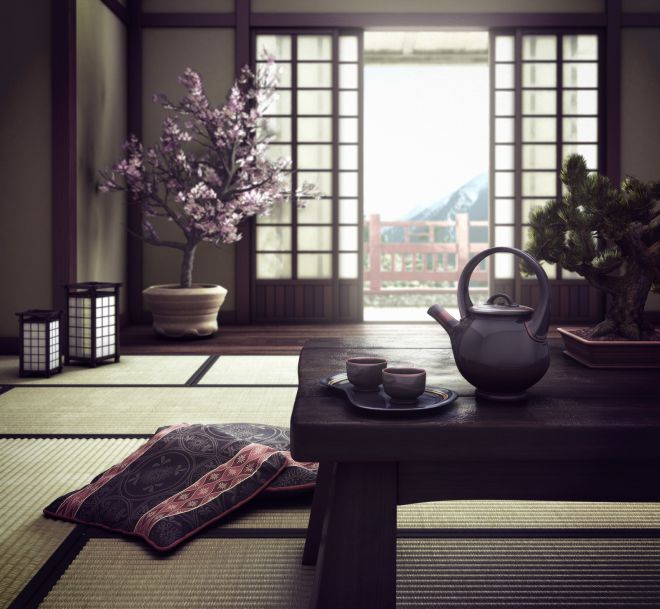
Japanese
The Japanese style in the interior does not tolerate materials that clearly look artificial. The maximum approximation to the natural form of finishing materials is a prerequisite. The use of wallpapers of delicate creamy, sand, beige shades with traditional bamboo drawings, the flowering branch of Sakura will create a peaceful atmosphere of the bedroom in the Japanese style, and by placing the murals with the images characteristic of Japan, thereby you highlight the sleeping area in the room.
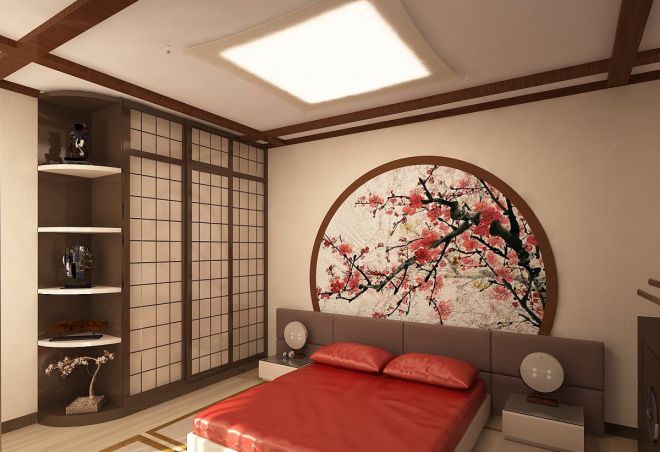
Japanese -style curtains in the interior
The Japanese curtain is a panel (screen) of a rectangular or square type. Such panels are mounted on a special cornice and, moving along it, completely close the window with a continuous canvas or hide one behind the other, opening the panorama outside the window. In addition to panels, roll curtains (wooden, bamboo, fabric) are used. Rolled and panel curtains in the Japanese style for the kitchen, bedrooms and other small rooms have recently come into fashion. They are also used as a screen to hide something from immodest eyes, for example, a hanger with clothes.
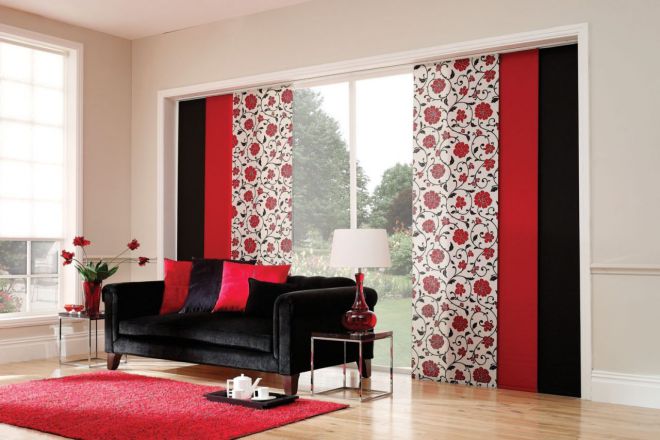
Japanese style
The decor of the Japanese style room is extremely minimal, functional and concise. Nothing superfluous! Nothing that clutches the space and interferes with the free course of energy in the house. Only a few decorative elements are placed in the room. Not everything at the same time, in this case, a sense of proportion and good taste is especially necessary:
- paintings without frames, panels, engravings in a traditional style;
- a special niche (toxone), in which beautiful decor elements are placed;
- carved figures of Okimono;
- dolls in national costumes;
- traditional swords;
- fans, flashlights;
- lamps of strict geometric shapes;
- a living plant (bamboo, orchid) or bonsai – a specially formed small tree of any breed with small leaves or needles;
- ikebana (composition of fresh flowers, branches, pieces of wood and so on);
- stylized images on the walls, curtains, partitions – bamboo, sakura, birds, hieroglyphs, etc.;
- Ceramic or porcelain dishes in the national style, vases.
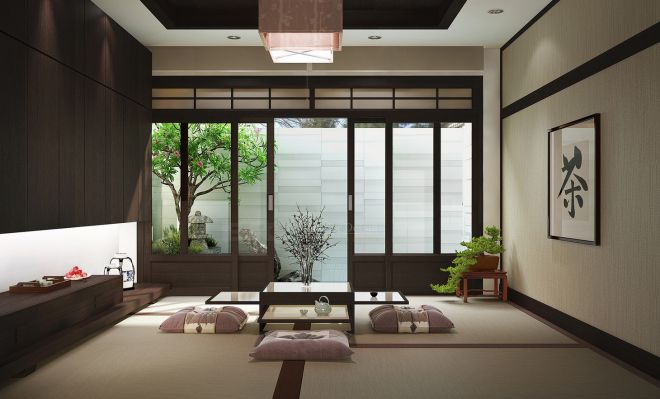
Japanese style in the interior of the apartment
The Japanese style is one of the many ethnicities. It has a kind of national features and very strict rules for the selection of finishing materials, jewelry and furniture, which may be unusual for the European. Perhaps you should not orthodoxy follow all the requirements, but make several traditional national accents if you have chosen such an interior design. The Japanese style implies the lack of bulky furniture, the cabinets are built -in, without noticeable accessories. Instead of nightstands and chests of drawers, small wicker chests are used for storage.
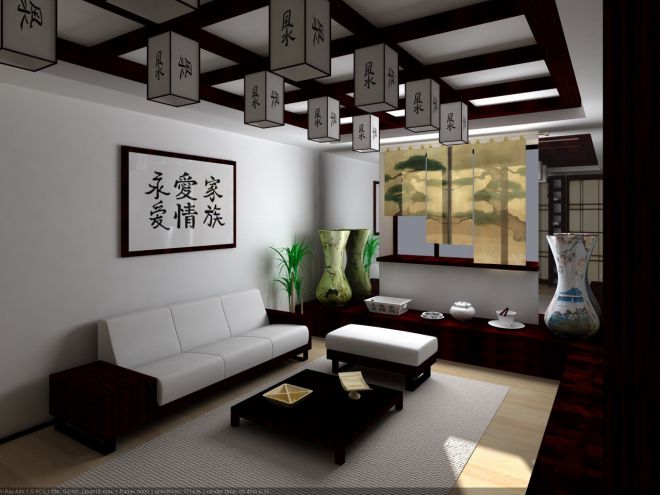
Japanese style living room
Translated from the Japanese, the name of the living room (common room) is “living space”, because in the traditional Japanese house this room, depending on the pressing needs of the owners, performs the functions of not only the living room itself, but also the office, the bedroom, and the dining room. A large room is divided into several separate small rooms using sliding partitions and portable sliding doors that easily move, and one spacious room is obtained that is suitable for receiving guests or holding family events.
The interior of the living room in the Japanese style is preferred by those who are fond of the culture of the East, strive for a balance of comfort and strict beauty. Sofas on low legs or without them, pillows for sitting on the floor next to a low table for tea drinks, mats from rice straw (tatami) instead of carpets, a large panoramic window and a lot of free space. All things are stored in built-in wardrobes, without attracting attention. No hills with dishes, bookcases – books are folded into wicker chests.
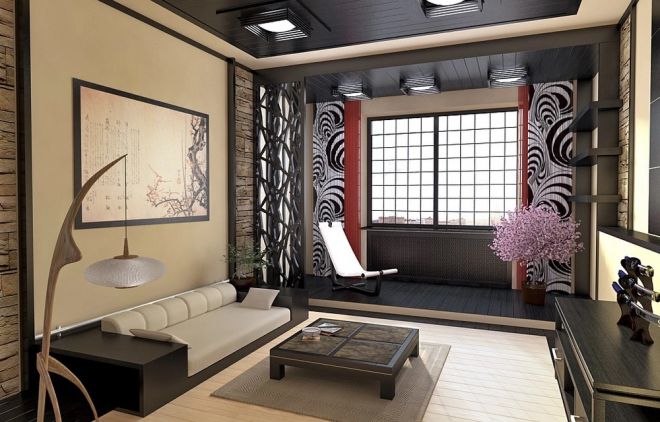
Japanese -style kitchen
Strict minimalism and non -custody of space, thorough thoughtfulness when choosing and arranging kitchen furniture are especially relevant in the case of our small -sized kitchens. Traditional tables on low legs are traditional for Japan, but for us it may not be quite convenient, so Japanese kitchen furniture can be used more familiar: a table and chairs of ordinary heights, but not massive, but light, elegant. No plastic, only natural materials, natural textiles.
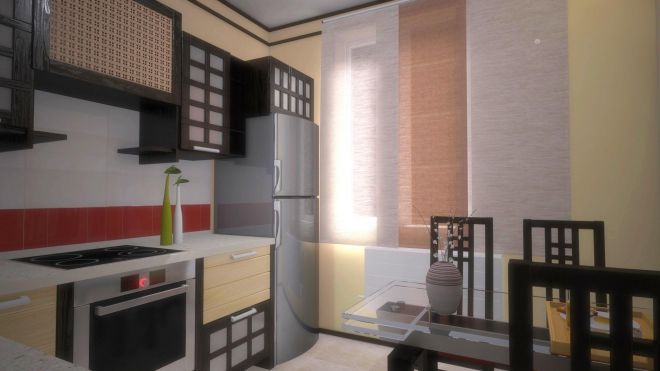
Japanese -style bedroom
The Japanese style in the interior of the bedroom is a wonderful choice for relaxation and night rest after a difficult day. The most overall furniture element in the Japanese bedroom is a sleeping place. It is a rectangular mattress, which is located directly on the floor or on the podium (platform). In addition, it can be a bed on very low legs or without them. Near the bed are low bedside tables. There are no cabinets in the usual form, clothing and underwear are stored in wall cabinets with sliding doors.
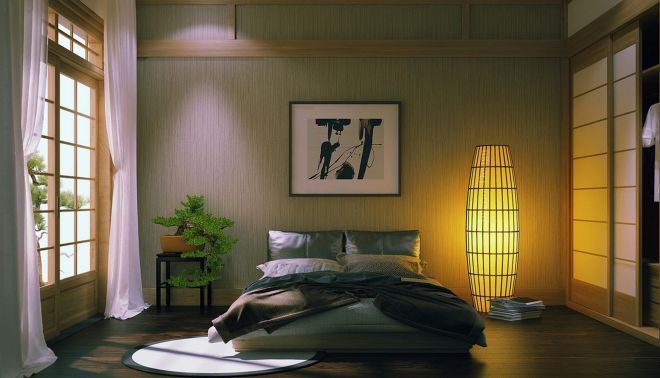
Japanese
As the theater begins with a hanger, so the apartment begins with the hallway. The interior decoration, the appearance of the hall of the hall, repeat any interior of the Japanese style room: non -granularity, a minimum of decorative elements, “mundane” furniture, upholstered, not sharp lighting. On the sliding doors of the built-in wardrobes, you can use drawings with Japanese motives.
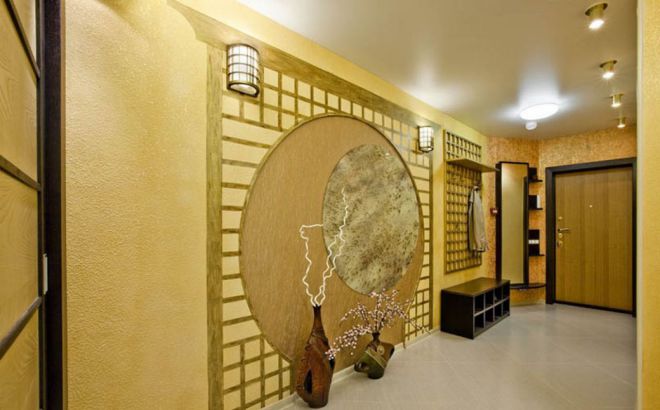
Japanese -style bathroom
In Japan, a traditional bathtub of cypress wood is used for washing, in which you need to sit with your legs and resting your knees into the chest. Such a deep bath so much that water covers the shoulders. Nevertheless, a Japanese -style bathroom for a European may well be equipped with a more familiar shape. It is important to use natural materials for decoration of the room: wood, bamboo for walls, pebbles, stone, wood – for the floor. For the House of Individual Development, a bath built into the floor in the form of a reservoir will look very exotic and naturally.
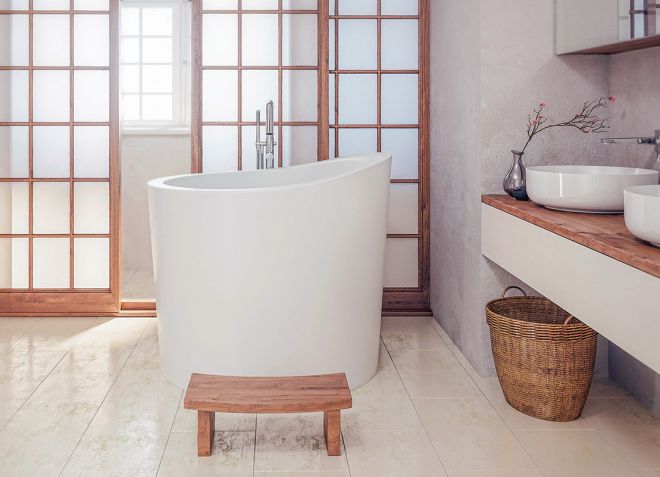
The Japanese style in the interior at first glance is seen as simplified as possible, but this simplicity is deceiving. In fact, it is very difficult to create an interior in which the oriental traditions would not enter into a dissonance with the habits of a person of another culture. For example, it is unusual for us to sit or sleep on the floor. We sleep on pillows, so for us it is quite natural to see them on the bed. In order to prevent popular copying of the Japanese interior, it is better to contact professionals. And confident in their abilities – a successful embodiment of the eastern dream in life!
